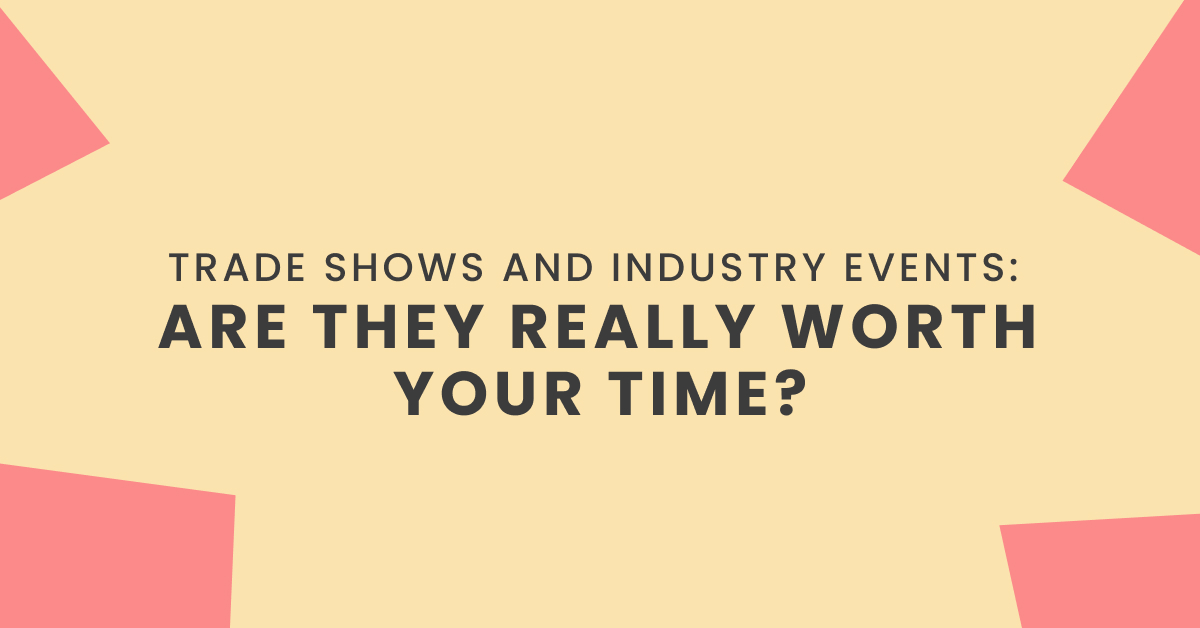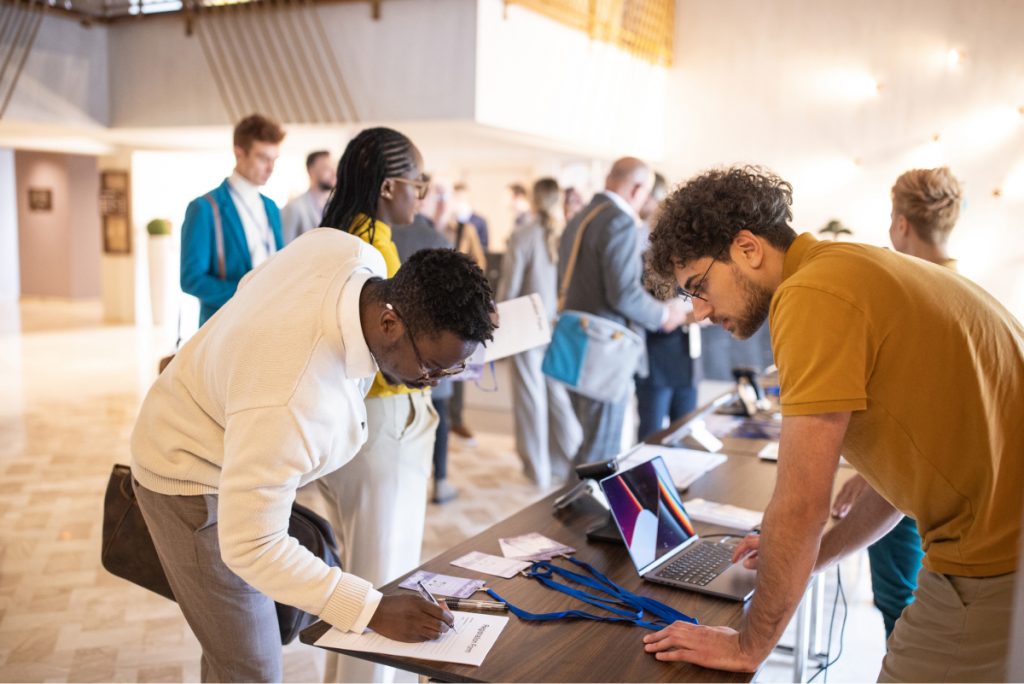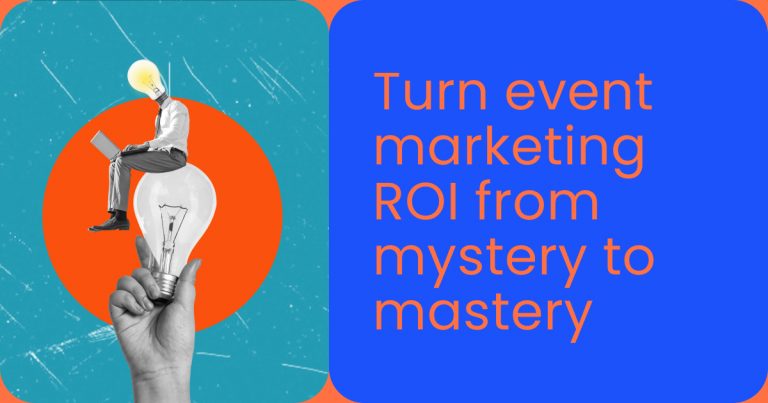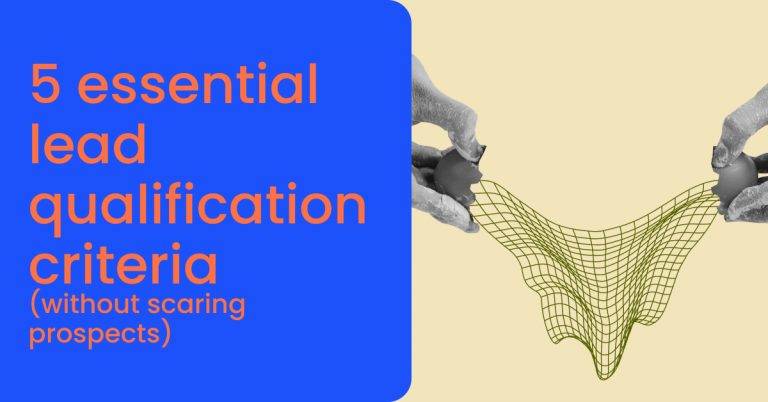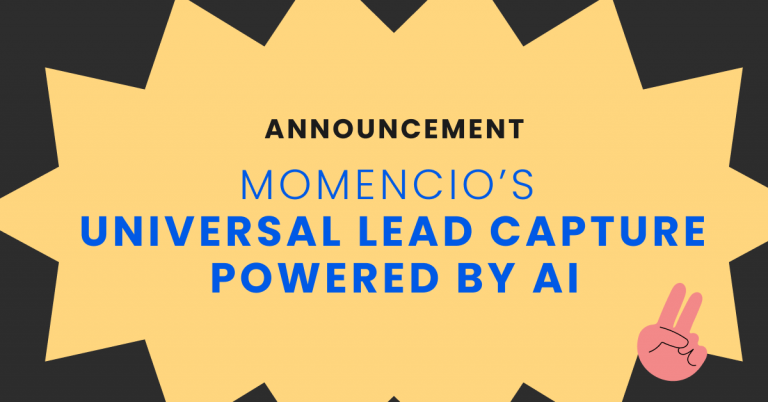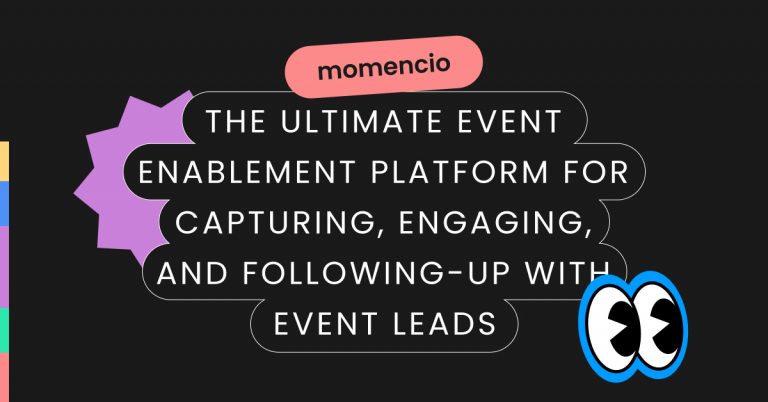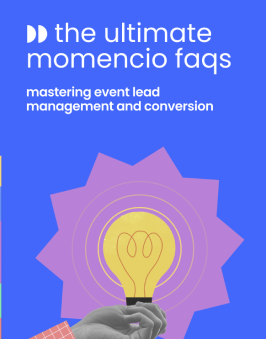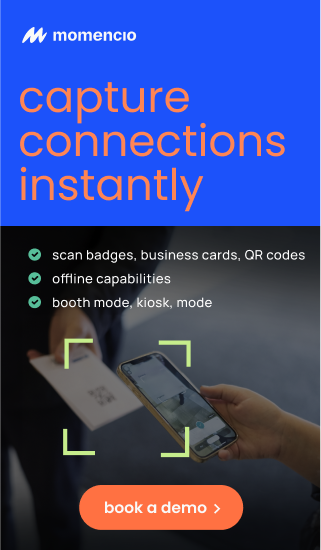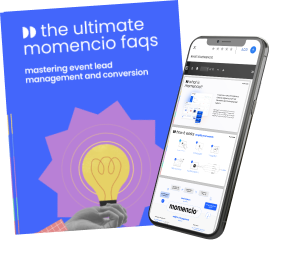Trade shows and industry events stand as monumental pillars in the realm of professional networking and business development. Historically, these gatherings have served as fertile ground for cultivating partnerships, sparking innovation, and steering the direction of market trends across various sectors. In the digital age, where virtual connections often supersede physical interactions, the intrinsic value of face-to-face meetings has been a topic of extensive debate. A striking statistic from the Center for Exhibition Industry Research highlights a nuanced truth. Despite the digital revolution, 81% of trade show attendees have buying authority, indicating that these events remain a crucial arena for high-stakes networking and decision-making.
As we consider these considerations, the underlying question remains: Are trade shows and industry events a relic of the past or an indispensable tool for the future of business networking and development?
TL;DR: Stay ahead by attending trade shows and industry events that offer networking, learning, and lead generation opportunities. This guide highlights the must-attend events across various sectors, helping businesses build partnerships, explore innovations, and drive sales growth.
Interesting facts from research
- A study by the Event Marketing Institute revealed that events increase purchase intent by 52% when consumers are able to experience products or services firsthand.
- Exhibitors can expect a return of nearly $4 for every $1 spent on trade shows—a significant ROI potential if the event strategy is well-executed.
- According to a survey by Statista, 30% of businesses planned to increase their event marketing budget allocation, indicating a growing recognition of the value of trade shows.
- The same research found that networking is the primary reason attendees go to trade shows, followed closely by learning and purchasing.
The value of networking at trade shows and industry events
Networking: a catalyst for opportunity
Networking at trade shows and industry events is akin to mining: beneath the surface of handshakes and business cards lie veins of potential that can transform your business trajectory. Each conversation is a door ajar to opportunities—some lead to collaborations, others to insights, and many to prospective clients. When professionals converge in these dynamic environments, the exchange of knowledge, ideas, and visions is not just about forming a web of contacts but about seeding future partnerships.
Serendipitous encounters and strategic alliances
Beyond structured meetings, trade shows foster serendipitous encounters. The chance meeting by the coffee stand or an impromptu product demonstration might lead to a strategic alliance or a creative collaboration. Consider the tale of a startup founder whose chance encounter with an industry veteran at a trade show panel discussion led to mentorship and an eventual merger. Such stories are not rarities; they are the bread and butter of trade show lore.
The multiplier effect of face-to-face interactions
The digital world offers broad networks, but trade shows provide depth. Face-to-face interactions allow for nuanced communication—body language, tone, and immediacy—that builds trust and cement relationships quickly. These in-person exchanges can multiply the effect of networking, leading to more profound connections that can catalyze business success in ways emails and virtual meetings cannot.
Leveraging networking for long-term gains
To leverage networking for long-term gains, a strategic approach is essential. Effective networking isn’t a numbers game; it’s about identifying and forging connections that align with your business goals. Pre-event planning, including researching attendees and setting meetings in advance, can turn potential encounters into concrete opportunities. Post-event, the real work begins—nurturing the leads. Here, platforms like momencio can streamline the process, ensuring that the momentum of a trade show conversation translates into sustained dialogue and quantifiable outcomes.
The real measure of networking success
The success of networking at trade shows is measured not by the quantity of business cards collected but by the depth of the conversations had and the follow-up actions taken. A study by HubSpot revealed that 95% of professionals consider face-to-face meetings essential for long-term business relationships. This statistic underscores the significance of trade shows as fertile grounds for networking, with each handshake having the potential to unlock doors to future business success.
Maximizing ROI from trade shows and industry events
Assessing the investment: more than just financials
To ensure a solid ROI from trade shows and industry events, start by assessing all investment facets: time, resources, and financial outlay. Events demand significant investment, so setting clear, measurable objectives is crucial. Define what success looks like—be it lead generation, sales, brand awareness, or partnerships. A study by the Event Marketing Institute reports that 87% of consumers purchase the brand’s product or service after an event, indicating the potential for a positive ROI if the event is leveraged correctly.
Strategic pre-event planning
Maximizing ROI begins long before the event. Detailed pre-event planning encompasses budget allocation, targeted marketing campaigns, and crafting engaging content and displays to captivate attendees. Smart goals coupled with a comprehensive marketing strategy—utilizing email campaigns, social media buzz, and personalized invites—ensure you’re drawing the right crowd to your booth.
Engaging the audience effectively
The key to a successful event is engagement. Innovative booths, interactive presentations, and live demos can significantly impact attendee experiences and lead retention. Equip your team with engaging stories about your products and services, creating a memorable experience for visitors. Remember, an engaged visitor is more likely to become a lead or a customer, directly influencing your ROI.
Data-driven lead capture
Utilizing data-driven tools for lead capture is paramount. A badge scan might collect contact information, but capturing qualitative insights—interests, needs, potential projects—is where momencio shines. It not only captures leads but enriches them with actionable data, allowing for more personalized follow-ups. By integrating with CRM systems, momencio ensures this valuable information enhances your sales pipeline immediately, creating opportunities for strategic lead capture. By integrating with CRM systems, momencio ensures this valuable information enhances your sales pipeline immediately, creating opportunities for quicker conversions.
Post-event follow-up: the ROI amplifier
The fortune is in the follow-up. Post-event engagement is where many organizations falter, but it is critical for maximizing ROI. Develop a structured follow-up strategy that begins within 24-48 hours post-event while your brand is still fresh in attendees’ minds. Personalized communication, fueled by the insights gathered through momencio, can escalate lead conversion rates, thereby amplifying ROI. As noted by Harvard Business Review, prompt follow-ups can increase conversion rates by up to 17%.
Analyzing and refining
Post-event analysis is critical to understanding ROI. By evaluating key performance indicators (KPIs)—leads generated, opportunities created, deals closed—you can refine future strategies. Leveraging momencio’s analytics can offer a clear picture of engagement levels, successful tactics, and areas needing improvement, turning insights into strategies for future events.
The comprehensive approach
Ultimately, maximizing ROI from trade shows and industry events requires a comprehensive approach: meticulous pre-event planning, engaging audience interactions, strategic lead capture, diligent follow-up, and thorough post-event analysis. By considering each stage of the event lifecycle and leveraging cutting-edge tools like momencio, businesses can turn every event into a profitable investment.
Leveraging trade shows for effective lead generation
Identifying and attracting the right leads
Effective lead generation at trade shows begins with knowing who you want to attract. Develop attendee personas to tailor your marketing and booth activities to. Using data-driven insights, identify potential leads’ pain points and interests, creating targeted messaging that resonates. Attracting the right leads is about quality over quantity—a few well-qualified leads are more valuable than a multitude of disinterested contacts.
Crafting a magnetic booth experience
Your booth is your stage. Design an experience that not only reflects your brand’s uniqueness but also draws attendees in. Utilize engaging displays, live demonstrations, and interactive technologies to capture attention. Consider the sensory experiences—visuals, sounds, and even scents—that can make your booth memorable. Harvard Business Review notes that memorable experiences can increase customer satisfaction by up to 20%.
Utilizing technology for smarter lead capture
Gone are the days of manual lead collection. Tools like momencio offer digital lead capture with the ability to enrich lead data instantaneously. Use badge scanning technology combined with real-time qualification questions to gather valuable information. This approach not only saves time but also provides a treasure trove of data to personalize post-event communication.
Engage, qualify, and connect
Once you have potential leads’ attention, engage with them meaningfully. Use well-crafted elevator pitches and storytelling to create a connection. Qualify leads on the spot by asking key questions that determine their fit and interest level. The ability to quickly qualify leads allows you to focus your efforts post-show on those with the highest potential for conversion.
Personalized follow-up: the key to conversion
The trade show might end, but lead nurturing is just getting started. Use the insights gathered during the event to send personalized follow-ups. Whether it’s a call, an email, or a package in the mail, ensure that each communication reflects the lead’s specific interests and interactions at your booth. Timeliness is crucial; reach out while the event is still fresh in their minds to maximize impact.
Continuous nurturing with targeted content
Lead nurturing continues after the first follow-up. It’s an ongoing process that involves providing value and maintaining interest. Send targeted content that educates and engages—think whitepapers, case studies, webinars, and newsletters that keep your brand top of mind. With each interaction, you’re building trust and edging closer to conversion.
Measure, analyze, and optimize
To continually improve your lead generation efforts, measure everything. Analyze booth traffic, engagement levels, lead quality, and follow-up efficacy. Tools like momencio can provide valuable metrics that help you understand what’s working and what isn’t. Use these insights to refine your approach for the next event, optimizing your lead generation strategy continuously.
-By combining targeted attraction strategies, engaging booth experiences, innovative technology for lead capture, personalized follow-ups, and continuous nurturing, you can leverage trade shows as powerful platforms for effective lead generation. And with tools like momencio, the process becomes more streamlined and impactful, turning leads into fruitful customer relationships.
Innovative engagement and interactive presentations
Interactive presentations: a gateway to engagement
At the heart of trade shows and industry events is the power to engage—an active, immersive, two-way interaction that leaves a lasting impression on attendees. Innovative engagement through interactive presentations not only captivates but also educates your audience about your product or service in a memorable way. Technologies such as AR (Augmented Reality) and VR (Virtual Reality) can transform a standard pitch into an experiential journey, creating a deeper connection with the audience.
Gamification: infusing fun into business
Gamification is a potent tool to boost engagement at trade shows. It involves incorporating game design elements in a non-game context—your event booth—to make learning about your offerings an entertaining experience. Whether it’s a leaderboard challenge, a scavenger hunt, or a virtual reality setup that simulates product use, gamification can increase booth traffic and encourage attendees to engage with your brand longer.
Tailoring content for interactivity
Content should be interactive and responsive to keep your audience engaged. Touchscreen kiosks, interactive walls, and live polls during presentations encourage participation and can lead to a richer understanding of customer needs and preferences. These insights are invaluable for personalizing follow-up and nurturing leads post-event.
Leveraging social media for real-time engagement
Integrate social media into your event strategy to extend the conversation beyond the physical confines of your booth. Use live-tweeting and live-streaming presentations, and encourage attendees to engage online using event-specific hashtags. Social media can amplify your reach and continue to engage with leads after they’ve left your booth.
Training staff for maximum impact
Your staff are your brand ambassadors. Train them not only on your product but also on the art of engagement. They should be prepared to read visitor cues, manage the technology at hand, and provide a dynamic presentation that adapts to audience responses. A well-trained staff member can turn a passive listener into an active participant and a potential lead into a loyal customer.
Creating a follow-up experience
Engagement doesn’t end with the event. Following up with attendees using the interactive elements they experienced at your booth can reignite their excitement about your brand. Send follow-up emails with video recaps of the event, links to VR content they saw, or invitations to online gamified experiences. With momencio, you can ensure these follow-ups are as personalized and targeted as the live interactions.
Analyzing engagement for future events
Post-event analytics are crucial for understanding which interactive elements worked best. Analyze metrics such as time spent at the booth, participation in interactive elements, and social media engagement to gauge what caught attendees’ attention. This analysis will guide you in refining your approach for future events, ensuring that your engagement strategies evolve with your audience’s expectations.
-Interactive presentations and innovative engagement strategies are key to enhancing the attendee experience at trade shows and industry events. By employing interactive technologies, gamification, tailored content, and social media integration and backing it all up with strong staff training and personalized follow-up, you can create an immersive experience that not only draws attendees to your booth but keeps them engaged long after the event concludes. Using platforms like momencio ensures that every interaction is captured, analyzed, and utilized for ongoing lead nurturing, ultimately leading to stronger connections and higher conversion rates.
The challenges of trade shows and industry events
Navigating logistical complexities
The logistics of trade shows and industry events can be daunting. From managing shipments of booth materials to ensuring your technology works seamlessly on the day, myriad details need to be orchestrated with precision. Overcoming these challenges requires meticulous planning, with contingency plans in place. Using comprehensive checklists and attendee management software can ensure everything is noticed.
Standing out in a sea of exhibitors
With potentially hundreds of booths vying for attention, standing out is a formidable challenge. It calls for creativity and innovation in booth design, interactive elements, and unique value propositions. Conducting pre-event marketing can also alert attendees to your presence and offerings, ensuring you’re on their must-visit list.
Engaging an increasingly digital audience
In a digital world, capturing the attention of attendees who are accustomed to online interaction poses a significant challenge. Incorporate digital elements that mimic online interactivity—such as social media integrations, live feeds, and digital product demos—to bridge the gap between the physical and digital realms.
Maximizing lead generation amidst distractions
Trade shows are bustling with activity, and distractions are abundant. Ensuring that your lead generation efforts cut through the noise requires an assertive and tactful approach. Train your team to engage passersby effectively, quickly qualify leads, and use engaging storytelling to keep potential leads focused on your message.
Keeping energy high throughout the event
The energy and enthusiasm of your team can wane throughout an event. Maintaining high energy levels is crucial for sustained engagement with attendees. Encourage regular breaks, rotate staff, and foster a team spirit that motivates everyone to give their best from start to finish.
Demonstrating ROI to stakeholders
One of the most pressing challenges is proving the event’s ROI to stakeholders. This requires setting clear, measurable goals ahead of the event and having a system like momencio in place to track interactions and follow-ups. Post-event reporting should illustrate not only the leads captured but also the potential sales pipeline generated.
Integrating leads into the sales funnel
Capturing leads is one thing; integrating them into your sales funnel is another. There often needs to be more connection between the excitement of the trade show floor and the follow-up that happens afterward. Use CRM integration tools to ensure leads are entered into your sales funnel immediately, with personalized follow-up actions triggered without delay.
The challenge of post-event fatigue
After the event, there’s often a sense of fatigue that can delay lead follow-up. This is when a platform like momencio can be invaluable, automating much of the follow-up process to ensure timely engagement with leads. At the same time, your team recovers and regroups post-event.
-Overcoming the challenges of trade shows and industry events requires a blend of strategy, technology, and people skills. From standout booth designs to digital integration, high-energy staff, transparent ROI reporting, and seamless lead integration into the sales funnel, every challenge presents an opportunity for innovation. With careful planning and the right tools, these hurdles can be turned into stepping stones for a successful event.
Conclusion
Trade shows and industry events represent a unique convergence of opportunity, innovation, and human connection that can be pivotal for business growth. They provide a platform for networking that can yield partnerships, sales, and invaluable market insights. The art of maximizing ROI from these events lies in strategic planning, engaging interaction, adept lead generation, and overcoming the myriad challenges these events pose.
The value of these gatherings is multifaceted: they serve as a live showcase for your brand, a test bed for new ideas, and a forum for learning and inspiration. When approached with intention and supported by the right tools, trade shows, and industry events can be transformed from a perceived cost center to a key revenue driver.
If you’re looking to elevate your trade show experience, maximize your investment, and turn leads into lasting business relationships, it’s time to harness the power of momencio. Don’t let potential connections and opportunities slip through the cracks in the bustling environment of your next trade show.
Take action today. Visit momencio’s website to learn how you can revolutionize your event strategy, captivate your audience, and convert engagement into measurable success. Embrace momencio and turn every handshake into a meaningful connection that drives your business forward. Book a demo now to see momencio in action and take the first step toward redefining your event marketing success.
FAQs about trade shows and industry events
- How can I measure the success of my participation in a trade show or industry event?
- Success can be measured through various KPIs such as the number of leads generated, quality of leads based on follow-up interactions, conversion rate post-event, and overall ROI. Tools like momencio can provide analytics to measure these metrics effectively.
- What are the best practices for lead follow-up after an event?
- Timeliness is key. Reach out within 24-48 hours post-event. Use personalized communication based on the interaction at the event. Continue to engage with educational content and nurture the relationship.
- How important is technology at trade shows?
- Technology plays a pivotal role in enhancing the attendee experience, streamlining lead capture, and providing real-time analytics to gauge engagement. It’s an indispensable component of modern event strategy.
- Can trade shows be beneficial for small businesses or startups?
- Absolutely. Trade shows can level the playing field, giving small businesses the chance to showcase their offerings, network with industry players, and gain exposure just like larger companies.
- How do you capture leads at trade shows without being intrusive?
- It’s about striking a balance. Use engaging and interactive content to draw attendees in and opt for technology like momencio for quick and seamless lead capture that doesn’t disrupt the flow of conversation.
